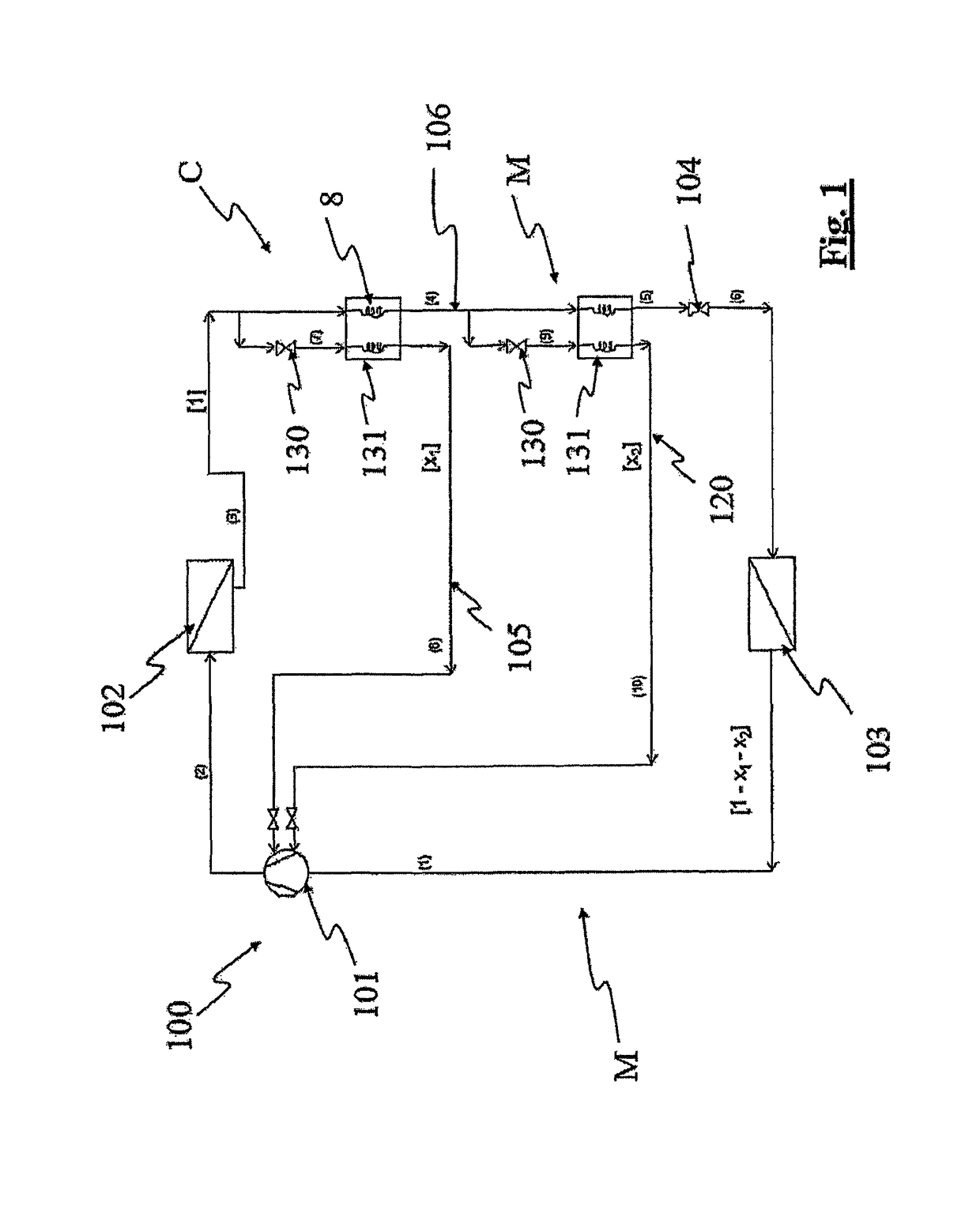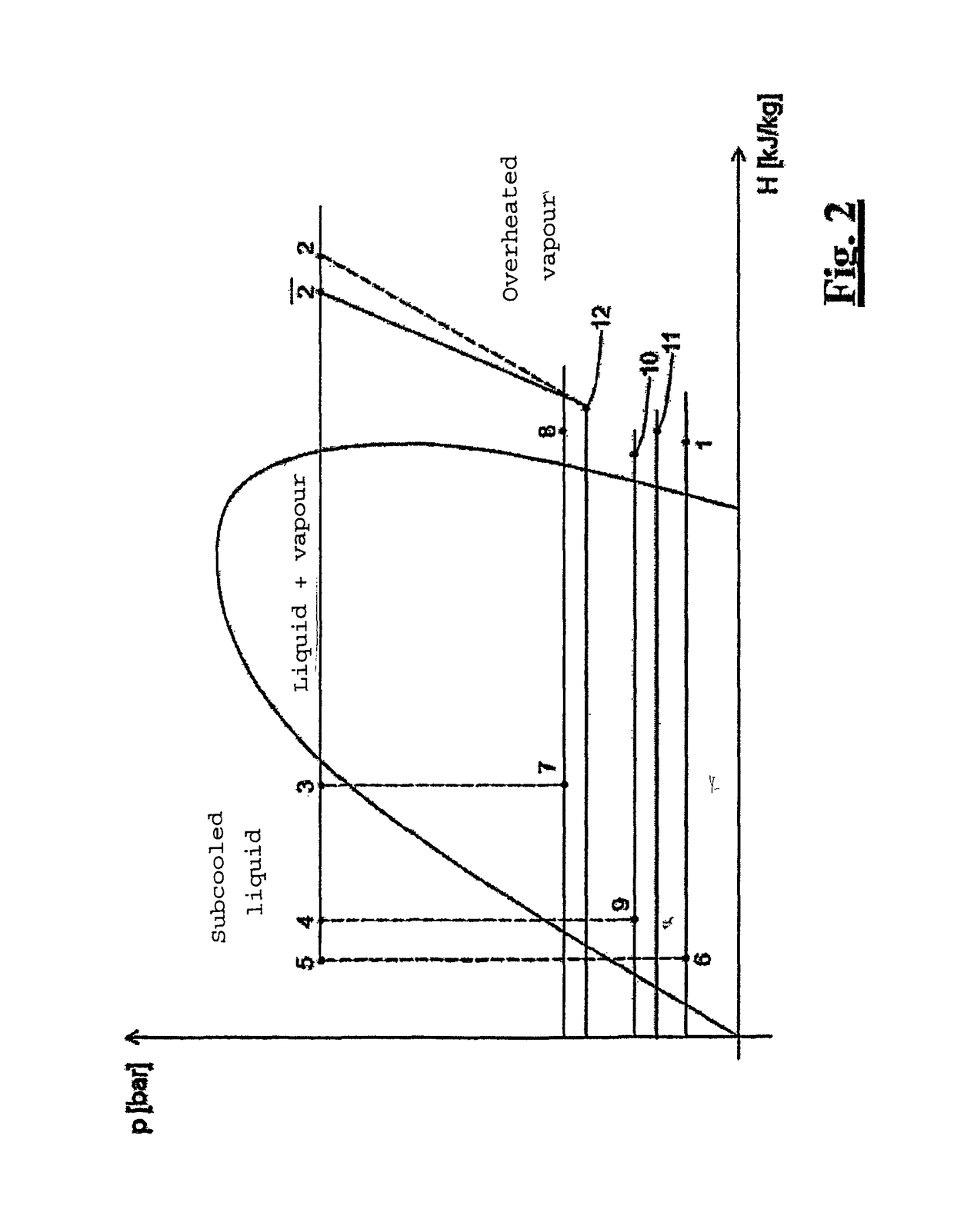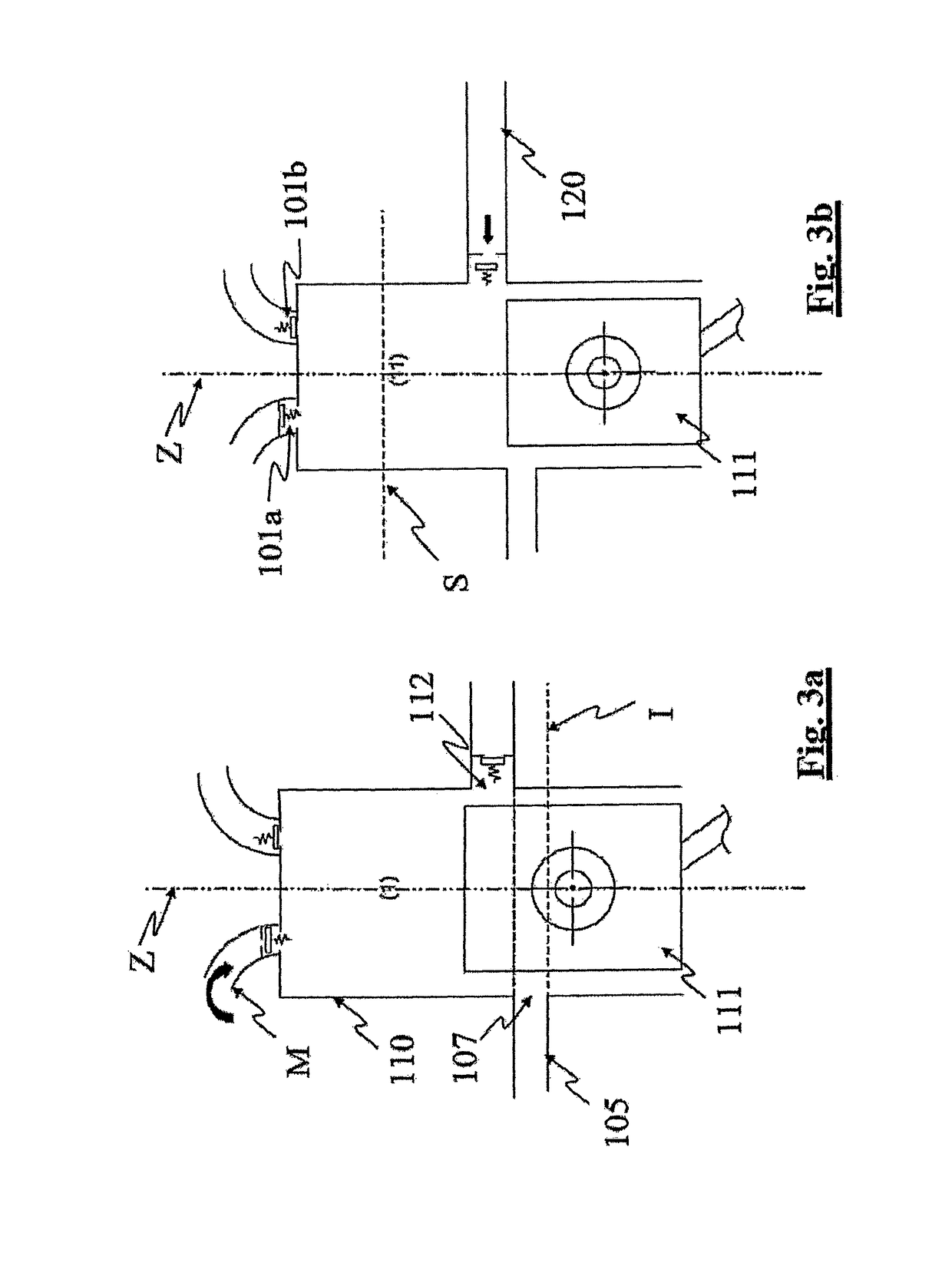Refrigeration device
a refrigeration device and compressor technology, applied in the field of refrigeration devices, can solve the problems of affecting the efficiency the complexity of the compressor of the so-called refrigeration device is significantly increased, and the control of the possible fine is not free from drawbacks, so as to increase the efficiency of the refrigeration device, the effect of increasing the complexity of the refrigeration devi
- Summary
- Abstract
- Description
- Claims
- Application Information
AI Technical Summary
Benefits of technology
Problems solved by technology
Method used
Image
Examples
Embodiment Construction
[0033]Referring in particular to such figures, the generic refrigeration device according to the invention has been denoted with numeral 100.
[0034]The refrigeration device 100 comprises a closed circuit C in which a flow rate of coolant 1 is circulating. Such a closed circuit C comprises a condenser 102 and a main branch M having a reciprocating compressor 101 provided with a cylinder 110 and a piston 111 reciprocatingly moving inside the cylinder 110, between a top dead centre S (see FIG. 3d) and a bottom dead centre I (see FIG. 3c), and inside which a defined flow rate 1−X1−X2 of the coolant enters, from said main branch M, at a defined suction pressure P1. Such a main branch M is further provided with an evaporator 103 and a first expansion valve 104 arranged between the condenser 102 and the evaporator 103. Such a closed circuit C comprises, in addition, a first secondary economizer branch 105 for a first fraction of flow rate X1 of the coolant. Such a first secondary economizer...
PUM
 Login to View More
Login to View More Abstract
Description
Claims
Application Information
 Login to View More
Login to View More - R&D
- Intellectual Property
- Life Sciences
- Materials
- Tech Scout
- Unparalleled Data Quality
- Higher Quality Content
- 60% Fewer Hallucinations
Browse by: Latest US Patents, China's latest patents, Technical Efficacy Thesaurus, Application Domain, Technology Topic, Popular Technical Reports.
© 2025 PatSnap. All rights reserved.Legal|Privacy policy|Modern Slavery Act Transparency Statement|Sitemap|About US| Contact US: help@patsnap.com



